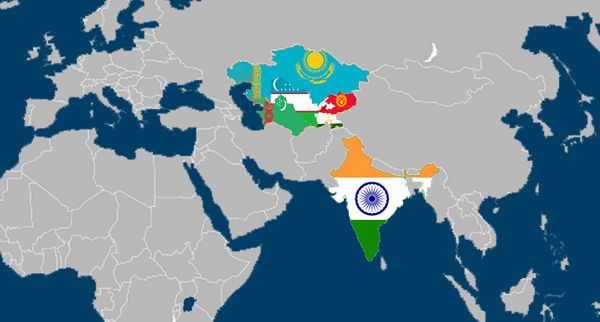- Courses
- GS Full Course 1 Year
- GS Full Course 2 Year
- GS Full Course 3 Year
- GS Full Course Till Selection
- MEP (Mains Enrichment Programme) Data, Facts
- Essay Target – 150+ Marks
- Online Program
- GS Recorded Course
- NCERT- First Ladder
- Polity
- Geography
- Economy
- Ancient, Medieval and Art & Culture AMAC
- Modern India, Post Independence & World History
- Environment
- Governance
- Science & Technology
- International Relations and Internal Security
- Disaster Management
- Ethics
- Current Affairs
- Indian Society and Social Issue
- CSAT
- 5 LAYERED ARJUNA Mentorship
- Public Administration Optional
- ABOUT US
- OUR TOPPERS
- TEST SERIES
- FREE STUDY MATERIAL
- VIDEOS
- CONTACT US
World Food Safety Day
World Food Safety Day

Latest Context:
On 7th June 2023, the Food Safety and Standards Authority of India (FSSAI) organised a session to celebrate ‘World Food Safety Day’. The 5th State Food Safety Index (SFSI) was also released at the event.
About the World Food Safety Day
- It’s a global campaign that aims to draw attention and inspire action to help prevent, detect and manage foodborne risks.
- It is celebrated on 7th June every year since the year 2019, following a resolution by the United Nations General Assembly.
- This campaign is led by the organisations like World Health Organization (WHO) and the Food and Agriculture Organization of the United Nations (FAO), in collaboration with member countries and other relevant organisations.
- The Theme for the year 2023 was “Food standards save lives”.
Other Major Highlights of the Event are:
- Winners of the Eat Right Challenge for districts were awarded for their outstanding efforts in improving the food environment and raising awareness about the food safety.
- Remarkable achievements were observed in districts from the states like Tamil Nadu, Madhya Pradesh, West Bengal, Uttar Pradesh, and Maharashtra.
- To celebrate India's 75th Independence anniversary and the International Year of Millets, the FSSAI envisioned organising ‘Eat Right Millets Melas’ nationwide. These melas will show the diversity of cuisines and millet recipes in the country.
- FSSAI aims to train 25 lakh food business operators in the next 3 years to ensure food quality standards are met across the country.
- FSSAI also called for establishment of 100 Food Streets across the country that meet quality benchmarks for food safety, hygiene, and nutrition.
- During the event, the Rapid Food Testing Kit (RAFT) portal also was also unveiled as part of FSSAI's digitization efforts. This portal will streamline the operations of the RAFT Scheme, ensuring greater transparency and accountability.
- The Union Health Minister released 3 manuals which aimed at enhancing food safety practices nationwide.
- Manuals include the analysis methods for Fish & Fish Products, Cereal and Cereal Products (2nd edition), and Beverages: Tea, Coffee & Chicory.
About the Eat Right Movement
- This movement was initiated by FSSAI.
- This movement is based on 3 key themes:
a) if it’s not safe, it’s not food’ (safe food),
b) food should not only serve the palate but is also meant for body and mind (healthy diets)
c) food has to be good both for people and the planet (sustainable diets).
- The Eat Right Challenge aims to create competition among districts and cities.
- It also to recognize their efforts in adopting and scaling up various initiatives under Eat Right India.
So, What is State Food Safety Index?
- It was developed by the FSSAI and first released in 2019 to measure the performance of states on various parameters of Food Safety.
- This index is based on performance of State/UTs on 5 main parameters, namely, Human Resources and Institutional Data, Compliance, Food Testing – Infrastructure and Surveillance, Training & Capacity Building and Consumer Empowerment.
- This Index is based on a dynamic quantitative and qualitative benchmarking model that provides an objective framework for evaluating food safety across all States/UTs.
- State of Kerala secured the top rank among larger states, followed by Punjab and Tamil Nadu.
- Goa emerged as a topper among smaller states, with Manipur and Sikkim following it.
- UT of Jammu and Kashmir, Delhi, and Chandigarh secured the top 3 ranks among union territories.
What is the Importance of Food Safety?
- As per WHO, an estimated 600 million people – almost 1 in 10 people in the world – fall ill after eating contaminated food and almost 4,20,000 die every year.
- The children under 5 years of age carry 40% of the foodborne disease burden, with 1,25,000 deaths every year.
- These foodborne diseases can also have long-term consequences, such as malnutrition, stunting, cancer and chronic diseases.
- Food safety is also essential for achieving many of the UN Sustainable Development Goals, such as ending hunger, improving health, reducing poverty, protecting the environment and others.
About the Major Challenges Related to Food Safety in India:
-
Insufficient Infrastructure and Resources: Lack of infrastructure and resources pose significant challenges in ensuring food safety across the country. Limited laboratory facilities and testing capabilities result in inadequate monitoring and detection of contaminants. Inadequate storage and transportation facilities can lead to improper handling of food, increasing the risk of contamination and the disease.
-
Contamination and Adulteration: The contamination of food with pathogens, chemicals, and toxins remains a major concern in India. Adulteration of food products with low quality ingredients or harmful substances is prevalent, compromising food safety and public health. High use of pesticides and chemical additives in agriculture and food production contribute to the contamination of food.
-
Bad Hygiene and Sanitation Practices: Lack of proper handwashing, sanitation facilities, and clean water in food handling and processing establishments increase the risk of microbial contamination. Unhygienic conditions in food markets, street food vendors, and restaurants contribute to the spread of food-borne diseases.
-
Very Weak Regulatory Framework and Enforcement: High inconsistencies in standards and regulations across different states and regions create challenges in maintaining uniform food safety practices. Limited resources and manpower for inspection and enforcement results in inadequate monitoring and control of food safety standards.
-
Increased Urbanization and Changing Food Habits: Increased urbanisation and changing food habits present challenges in ensuring food safety. Increased demand for processed and ready-to-eat foods as well as street foods, requires robust monitoring and regulation to address safety concerns.
Way Forward
-
Establishing More Food Testing Laboratories: There is a need to establish well-equipped and accredited food testing laboratories across the country, especially in rural areas. These labs should be capable of conducting rapid and accurate tests for various contaminants, including pesticides, heavy metals, and pathogens, ensuring timely identification of unsafe food.
-
Empowerment of Local Communities: There is a need to encourage community participation and awareness by organising workshops, seminars, and interactive sessions on food safety. There is also a need to empower local communities to take ownership of food safety issues and implement solutions at the grassroots level.
-
Implementing Transparency in Food Stock Holdings: Using Information Technologyc(IT) to improve communication channels with farmers can help them to get a better deal for their produce while improving storage houses with the latest technology is equally important to deal with natural disasters and hoarding.
-
Food Bank: Foodgrain banks can be deployed at block/village level, from which people may get subsidised food grains against food coupons (that can be provided to Aadhar linked beneficiaries).

Prelims
Q.1 In the context of India’s preparation for Climate-Smart Agriculture, consider the following statements: (2021)
- The ‘Climate-Smart Village’ approach in India is a part of a project led by the Climate Change, Agriculture and Food Security (CCAFS), an international research programme.
- The project of CCAFS is carried out under Consultative Group on International Agricultural Research (CGIAR) headquartered in France.
- The International Crops Research Institute for the Semi-Arid Tropics (ICRISAT) in India is one of the CGIAR’s research centres.
Which of the statements given above are correct?
(a) 1 and 2 only
(b) 2 and 3 only
(c) 1 and 3 only
(d) 1, 2 and 3
Ans: (d)
Q.2 With reference to the provisions made under the National Food Security Act, 2013, consider the following statements: (2018)
- The families coming under the category of ‘below poverty line (BPL)’ only are eligible to receive subsidised food grains.
- The eldest woman in a household, of age 18 years or above, shall be the head of the household for the purpose of issuance of a ration card.
- Pregnant women and lactating mothers are entitled to a ‘take-home ration’ of 1600 calories per day during pregnancy and for six months thereafter.
Which of the statements given above is/are correct?
(a) 1 and 2 only
(b) 2 only
(c) 1 and 3 only
(d) 3 only
Ans: (b)



